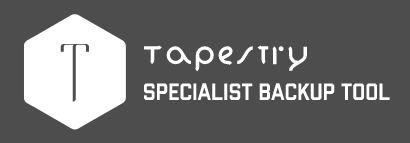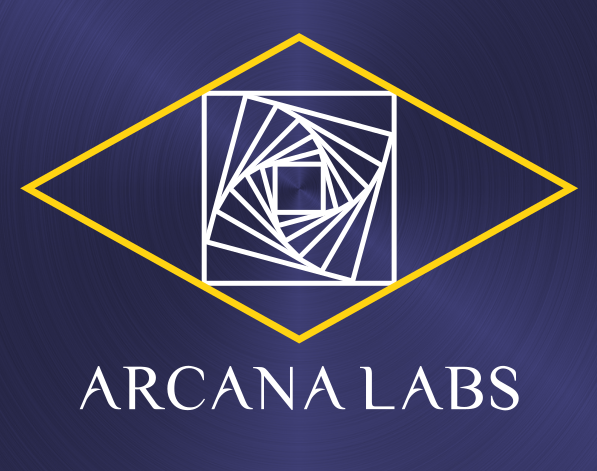LabNotes for This Project
04 Jan 2024
Tapestry is the oldest code project of mine that can be said to fall under the Arcana Labs umbrella - in fact, it’s so old that the project itself has persisted through two full rebrands and renamings of the lab - Kensho Security Labs, and Patch Savage Labs before that. While I’m sure I’m now its only continuous user, the fact remains it is, at least for me, a profoundly useful backup utility… when it works… and sadly, it no longer works.
20 Dec 2023
Tapestry is the oldest code project of mine that can be said to fall under the Arcana Labs umbrella - in fact, it’s so old that the project itself has persisted through two full rebrands and renamings of the lab - Kensho Security Labs, and Patch Savage Labs before that. While I’m sure I’m now its only continuous user, the fact remains it is, at least for me, a profoundly useful backup utility… when it works.
27 Aug 2021
Wasn’t there an update for Tapestry coming out this month? Weren’t you going to keep working on PETI? Did anything get done at the labs, come to think of it? Actually, yeah. Lots of things have happened. Let’s talk about those.
01 Jul 2021
Tapestery is probably the oldest project most Arcana Labs followers would remember me working on. It began two iterations of identity ago, back when this was “Patch Savage Labs”, followed through the Kensho Security Labs Rebrand, and three jobs and several years later, it’s still with us - a bespoke backup utility nobody asked for.
05 Feb 2021
Recently - this very morning, in fact - it was suggested that I move credential storage for Tapestry out of the “no, you’re not allowed” space and into the local system keyring by use of the python library module of the same name. After a quick review I decided I would, and the current version of the development code for Tapestry already includes the necessary changes. I did however want to talk about why this decision was made and why you may or may not want to use it.
15 Sep 2019
Of the various projects underway at Kensho Security Labs, Tapestry is probably both the flagship project and the most mature codebase. To date, the project has seen some 14 releases across 471 commits on master.
17 Apr 2019
Tapestry 2.0 was released yesterday, and while I slapped together a quick release on the topic at the time, I wanted to follow along that idea with a “lessons learned” retrospective on our testing and development process.
16 Apr 2019
Tapestry 2.0 was released this afternoon. I wanted to throw together a quick blog post about it so that I could plug the new features, explain the major changes, and drop some hints about what we might see in future releases (and when we might expect those). A future blog post is going to offer a retrospective on the 2.0.0 rewrite as a project in its own right!
03 Mar 2018
16 Feb 2018
Tapestry Is Getting Real
21 Jan 2018
Wait, I thought the whole point of Tapestry was to establish trust?
In a sense that’s actually true. Tapestry’s purpose was to create an absolutely-trusted backup. That is to say, a user familiar with the program’s operation can create a backup with trust it has not leaked data, store it with trust that it is illegible to remote users, and recover it in the trust it has not been tampered with. However, this approach works precisely because it discards trust in as many factors as possible.
10 Oct 2017
The trouble with being more toolsmith than true developer is that most of the projects you find useful to construct aren’t really marketable. Tool niches are already filled, with multiple solutions with full dev teams and legions of marketeers. Therefore, if I’m being realistic, I should realize any tool I make, however I generalize it, is going to be niche and bespoke to my uses.
08 Sep 2017
In spite of two gigantic sidequests - some Tarnished Tale work and work on the Patch Savage Labs Website - work on Tapestry has continued more or less apace. As expected, there’s nothing major coming down the pipe for 0.3.1, but I thought I’d talk about it anyway since the release will be delayed until somewhere around the end of the month.
23 Aug 2017
Tapestry v.0.3.0 has finally gone live! It should come as no surprise that this release doesn’t fully support windows, and this much is indicated both by the program itself if you attempt to run it in windows, and the readme itself.
20 Aug 2017
Two months ago, I announced that Tapestry v.0.3.0 was “coming out soon”. And that much is true. What is less certain is what v.0.3.0 is going to look like - and how much that future is going to have to change.
15 Jul 2017
You might remember that over one month ago, I announced that Tapestry v.0.3.0 was going to have a whole bunch of new features included in it that weren’t there before, and I am happy to say that all of those features work, for versions of work. So where the hell is it? I did a bad.
10 Jun 2017
Tapestry’s next release was intended to be a small set of fixes, finally fixing the passphrase support for Tapestry-generated PGP keys in both the generator and the recovery modes, and a few related small cleaning changes to the way it outputs files. However, a small change in my work environment (and the discovery that somehow my laptop is suitable for hosting a Win7 VM) meant that what was to be 0.2.3 is instead going to be 0.3.0!
21 May 2017
Tapestry has a very odd design. Not odd in that it is novel (I’m almost certain it isn’t) or odd in its extreme pecularity, but odd in that it is oddly specific. A traditional backup tool functions not unlike a drive snapshot. It pulls your files, and often your applications and OS settings, every time it is run. Contrast with Tapestry, which by default only grabs your Documents and Photos - Music and Videos, too, if run inclusively.
20 May 2017
Tapestry is my specialized backup automation tool, currently in version 0.2.2. The project started as a simple exercise in automating what was, for me, a rather complex task. Naturally, it has since sprawled considerably as an exercise in generalizing its use. It is presently written in Python 2.7.12 with dependencies on Python-GNUPG and Gnu Privacy Guard.

